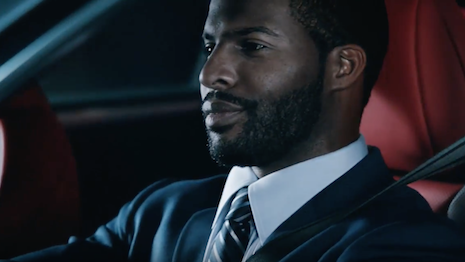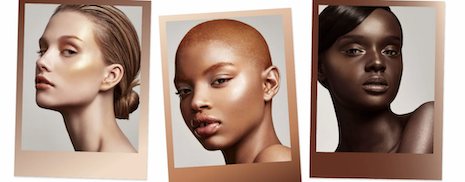Although many brands are actively making efforts to have and promote more inclusive practices, the entire advertising industry still has great progress to make.
In a webinar on May 27 hosted by data analytics and brand consulting company Kantar, in conjunction with AI company Affectiva, panelists addressed the multitude of ways brands can be authentic and purposeful in producing more inclusive efforts. Implementing inclusive casting, inclusive stories and inclusion as the purpose of a campaign are methods that help brands create more effective and empathetic advertising.
“When we look at the ads that feature underrepresented groups in a positive way, we see that there is a huge difference in the potential to build the brand in the longer term, and also better potential to influence short term sales,” said Daren Poole, global head of creative domain at Kantar, Sydney. “In the past, lack of inclusion may have come from fear of alienating audiences that are applying to people represented in ads.
“But it's clear that showing people who are different from the audience doesn't harm the ads,” he said. “Actually, if done well, it helps you by improving the advertisements' return on investment.”
Inclusion in numbers and beyond
To reach more consumers effectively in 2021 and beyond, brands are being called to actively seek out opportunities for inclusive casting and to tell inclusive stories.
Inclusivity reminds consumers and brands alike that just because people do not look like someone or share all of their experiences does not mean that they cannot engage with or relate to them. The power in good storytelling is empathy, and inclusive stories can breed that sentiment.
 Lexus often creates multicultural campaigns. Image credit: Lexus
Lexus often creates multicultural campaigns. Image credit: Lexus
Kantar found that diversity, in several forms, is currently in the advertising industry.
Only 1 to 2 percent of advertising staff are disabled, while only 17 percent of creative directors are women. Among chief executive officers, only 3 percent identify as Black, Asian or multi-ethnic.
Additionally, only 6 percent of creatives within the industry are over 50 years of age.
Populations underrepresented in the advertising industry are also underrepresented in advertisements.
Fifteen percent of the world population has some form of disability, but only 1 percent of ads feature someone with a disability. This group also has $8 trillion in spending power.
People are living longer, yet only 6 percent of ads show people aged 65 years or older. This demographic has $8.7 trillion in spending power and due to lack of inclusion, is being overlooked, causing brands to lose out on selling opportunities.
In 89 percent of advertisements that were screened, those starring were between the ages of 20 and 39. Kantar also found that many brands are catering to preconceived gender roles, with 96 percent of laundry product ads and 93 percent of household cleaner ads targeting only women.
Brands cannot tell the same stories, people of the same ethnicities and ages repeatedly if they intend to reach more consumers.
To channel inclusivity successfully, advertisements should understand their target markets and the importance of stirring empathy among them . Brands should seek authentic portrayals for the people being represented.
Several brands are approaching inclusivity from different angles, with some addressing stereotypes that consumers watching these ads may have faced themselves.
There are several different ways brands can implement and highlight inclusive stories.
Consumer goods giant Procter & Gamble released a “Widen the Screen” vignette in March, illustrating prominent cultural stereotypes against Black people, and how brands can stray away from these while instead choosing to tell authentic Black stories.
Having inclusive casts, stories and shining a light on the purpose of inclusivity itself will can be immensely beneficial for organizations trying to reach untapped markets and audiences.
“What seems to matter is the empathy that audiences feel for key characters, and the emotional power of that narrative,” said Graham Page, global managing director of media analytics at Affectiva, United Kingdom. “All audiences, not just those from underrepresented groups, empathize with powerful stories, whatever the ethnicity, gender, sexual orientation, or ability of the main character.
“Many clients or businesses may in the past have shied away from using underrepresented groups for fear that they might alienate what they think of as their core audience,” he said. “I think often people can empathize with people who are very different to them, and in many cases, underrepresented groups can help tell powerful stories better.”
Telling important stories
Brands from across sectors are realizing the importance of inclusivity in all facets of operating — from telling diverse stories, producing an inclusive work environment and making genuine effort to craft a more diverse world at large.
British automaker Bentley Motors has announced new details within its diversity and inclusion strategy, as well as revealing a uniquely-designed Flying Spur to celebrate its focus on inclusivity.
Recognizing the fundamental importance of diverse experiences and perspectives to drive creativity and innovation, Bentley is aiming to become the most diverse luxury car manufacturer. With that in mind, it has set a target of increasing diversity in management to 30 percent by 2025 (see story).
Global publishing company Condé Nast is holding itself accountable with new goals founded on creating an equitable and inclusive recruitment, retention and talent development approach.
According to its first annual Diversity and Inclusivity 2020 Report, only 10 percent of the company’s U.S.-based senior leadership positions are held by Asian employees and 5.5 percent are held by Black employees. Having examined disparities in gender and racial representation throughout 2020, Condé Nast is dedicated to implementing strategies for creating a more inclusive work environment in four categories: employee diversity, leadership, content and training and benefits (see story).
Brands do not have to wait to reach new audiences. In telling different stories and trying to reach people they have not before, there are a multitude of possibilities.
“There are people in your audience that maybe haven't seen themselves represented, ever,” said Vera Sidlova, global brand manager for creative at Kantar, Prague. “And that is a chance to show that your brand can make an impact for them as well, and that you're speaking for them as well.
“So don't wait for the society to change, you can play a role in pushing that forward as well if that's done authentically and in line with what your brand stands for.”
{"ct":"BrKVu1i3RBoNafUU6ckmkS87+aHyuc\/joiu+fPE8pGWXPppbY1bzUYtFFoH1+qN6Xm6Y0Pmzf2Pmu1TTjYA\/0OM3Cd4hJCLJQnv8cWBY742RT6mZN01ud6M83m+Dv1IJBlBGsciDn2BUCO\/15QO2mqWonUsSsyfU96pmtDK0nuHbqNRafzy074UDfd6bd\/yJe9PuVdtkTPUhcp58Mdj4Rkj8W\/tKd6Vv9sjOxNf1sJahsE4PtQFr\/vIZtaxuYlyRrcZOGzVBz\/fyH7xn6VUcmRK9I\/glNUWpLcrDlTzOMPhIG7eS247U1UV4Gq6jEZL0H8VPgmvhob\/NQ7iSp73itvMmCg0xUqLwcKwca8pUy3FxIwORw5KednU8ZsFALcMm9WrWh4Z\/oMPbyvzvnShEWR4h1Kt+8nKcfbtNLKDKatFii6UtReKy2hql50avexaxK8JmiHtOuGHjllUH+VMYuU6\/LXJnrvBF5k37qhgMZKfDosiilcJ\/ClVwTF859XCe2GlpYK7rEAXBQ0xARnv5Iobz6Svc1WLFo3V8yIoWbudwTM7FrwbcK064ZwHPKKSsqh1dev\/CPeRXc7TSI5ZYr4+l9iOiuBWM98wBTfn2Sysk8lD\/tr\/mVG6yWNau6Ww7WrCvrzQODAN3HLEPn4rM48oKWLEOE\/HrQB0CK0xx84IY75QDu4aNieXIMhi62RYz6YCjHk7hxvP1A3g6GDcUvOBBjpl3RqBoNI3svFuc782wEKQzuojFN8rP5fxcGaLdncRQ\/GMLqE2iWTIQ9uJSo\/6b5rHEuzXnu77xS3XHwvveEKWWAp3jWSXZ+ge7B2ljXSRXxC+q855hIyEvBRgGthgoWbWTIqtPloQqiZLuhIqXJCBd6LcCcgAUdHDzMTpCQjIk3xfh\/wUaahL4HrykbZw0N+8SRh7U5DR2sI8yV5XJeCPoEDqb1A6BNPm2DOTtsSDBnmWACwb98isD\/sRXeOJXspnF4boAWJDIMsd2SPwGA58F3zqV0O2oNMjg6F\/OPSQjVQ4A0EF8aLBGPF+fSXw7Jmcah2oifWS7ss1otohgUbNUxZAMcq2XrIS5olKZZ5v2mEtKJ1eM+KO1UXFqaH5O6xBgZFf7rl+RiETOUjPeMTHFOdnOIrOlEf5K6mv\/naQhsZXmzGS4jXUVysf93bJII1JQ9tfiMK3gblHDkO34pboUX0M9VEAN1rOz+NkEtE3FmTancBQjHgJ1Rwxz7v1xDpyco\/ER4Kq2B1qjpUQ6Lp6eTjmN8fiq9ok15+OSzCpIo7LokZ\/hSG9OGJJyLmJmfCjGj1QvD6G3MbFcfP1MikoczAP1Q3tMNk3vFpMoY\/vxMriAIpqEwlpB30OX6adWWUXmsRPAXmzS6U9sltaOdZV7GmQQ0RLCn4movYndXNDsjv+fgIwOcvqLWLShpJn0Gmx22Q6aHT4whiy7NJ56CIx1OYgfopMZb3Ff1A2q05VQHSQ+qDKpLXimyhGfwTYoAPTTo9Ahz6WYzRpgKWzoa1O9pNklzdaCPl62xc8aMj9f\/qQilC8Zu2OsI0gN18OMN34vSJKaiIjD8zTbkTQ7AAxjPgCohaNVXu7LmNycqjx5s1zDcJfNCDyzuyPWVZUcP+WtR00XYBaA7ArVvFBGVabvakkjUreeVVy6\/ZPb09xksZ9RNrjuNxBniEnlhKBbwjlXgo2ruSStj3sfHJbBH4bSkGbiNM1y9rNrKudFzyqZnF412uRsqa5fs1SG9pfM5J7r2WlARY2Gup2EPowJUY6MU7FTAEs5vmukJq3cIGd2wM0AXaub6M7p08IPgKoc\/rVaDqi9Z4YxRKDZZA51m6wmY9VsmehtkU3GcRCjkl6C9pqP3Q524Y6YE\/hKAN0rrLgaBPHrDF0+gTLPGLk16ZkDutD53QGNJZW9vXWC8+2ZHIjJyC33G0Kd\/e3gmF4gdQSyb5E6YJt4PRmgtOTZyByV27m8kMQyK2lGnHvbIFQa9pLXLqJetfyKNfmWxjmD\/fVjgP2G6PB3VbDlfbE7iTFF9n6\/fyUft5vVyoC6fhU64jLk1VnpkwtFXWRdpNmoufYknXu02PmOXPpVtW1aX1RXT5AkdJB1Sins+6bjT6hXVgoGaFLZrK8xi+goV+ShJ0+SBash5553rCRvhNlxRgTeG\/oNklJtJV8RV\/T9B2b5Zk18xM5C89zTmcS5SmHXv\/3D6yh3Yo\/Is7lRYJHxZVqTm8gTBja4WsCs8jbz\/uLn7pw82PqHH9sD3X4q8+sWxMlxY53EO5frMm+U3ZSL1cOp5hgGmfHGUpZDt4nszcYEz\/yK71YtDzOJ3iLk\/n2+YKj3rhivPcLIJNRMmMtL1jGvfuHTgxsLyoiROwnzxDWSJrZN++R0LWVnw5NPTuvN8rNltiejiz0YrRRA4+sXjJkyWUyuwEpoDivRzQWxOD5Oleh\/dY0i+07gw6AU9urw+8wRX+Uokm3eBxQMSuabJ7jGRDu3xyy6AB+S0vepLH1e+Pah\/YY7nDWg0ndFG8B4hBKtSq0150rDGEiD7Hdna0XNUvf\/mqdOTXSPU3\/aZ5OeMnVxLeltV+u6O4z8KX2G5vHEcnXyIjCqaRQ3NStdQjKkcHbX7z4GaesCM736ZRJOijKgE2hmZAcyBNSZ3MAnmtsix4qRi0idaruCrcsU\/vF2kwEeIuS3TcUVOgP2D0XBDpOkUxUeq4XLfErBpcIQaoK\/WWxK2lFnlEPX6QMYmpAyQCTDHEQyT77\/uAhTeHK06r1CXy2VOJMsC7CDg7fxuAjrQm4+3lb9Dvng1oL6zXgVZ3WQzgIaYl6k+1MGV5HUesIP1yhMM1T2IvGy2aaiCGcDwDcMwy6YUVk6YYQx5dBcg+DcYhSowM1lxmH7Ty6qQ0xd0UMSfdkEscYj15SNeg05Zg0tlICpoya9xDMtb\/PAktHHzJeeLDmhxNQO\/a3S0LQHdzNLcPpeKLUrb5UokkPTTUIVTDLhbzdFy89n0Hmy0tPUvBGuLqkRhbpNnBm6zd1oIIrqylxF4zbsd1IXZvEr+qmqhIemHHx3G+Ut3EH+0eSFQMxEaJzKvC+flGcZhlmHsFM+7vr+ppOuyi4K2zlJnclebJo+HBCTRanvbdmgB8mpdkkweP82568I7RVPvBnC2muAzEsaBaD9d1OyJXDiNo5zRZjO5N8Trs3XnuECLdc9xVaQnCVCoZWWg9\/Az+IAwvIG43wDhm2LopXqA9s\/cm4Xfj7qj0Yl5lTxT\/yYnTOTcs6hSRW50JKa3WzbNeH1XepWKEXAfC5Ilml+qizPSArpseN\/KOndkat364\/Sgs0oFhxVVYzTdfBaSTR9TXN\/SIIuo6XCifb04igNR5rH7olEfacc576\/rTRptVejatg7SguxDwqmu9NCdm8VYY5waBTtcLnIURwjvddm1p6DIDeLQDdAfZRCE\/Mt\/QREFffxWXHQdyF5n3tCeqD1YpOJYHrBzJWiF6UkNp9OVi1i4eMedCHgJc0knipDCY6s4EKYdYbXs4svCAz4yrKEcIwFjecCBJBr9OiC0s724r+W1mQaDtv1MHCxtPx1RLXc41STA++Hp7vftxrGsz9SRIzr6ycoB\/\/KZ3V20agwfIPTPjZCYhy6AMv12o6lrgsTRC\/LrorwsUI2SJDA+NRZIWLHnWkEnyddGeU9VKEjYf8xPlb61JLvuna2SHsYnUjXbCR8CjuGUMho7vxkL0mxKb058iCW57yMuEGMRoEFX4raUwQkPuLawhMT2E2smmZS\/1Wf0RIwV39tKczBWmZ8tXDYQrmEP\/WQA6oo4RTJnemWv3bPeGAPOESz409EUVqz7XzkQO7AiVHNKr+NIYJopdw3hSPO4nuhFp5vG6LLmQOcLMHSv0T6o6RT6y53ppzYbD0rQKprABm3y7tiGogWC2xPO9mX\/nnGCDJSNKajSY43IqVFCKSZ5u\/X8hpjwZbTWyLCvcRWtPWzCrPXlcbyF6yHZsmkHqs2u\/+CAGHf7iB2pmQdonav4aFOjPodNHiVfGm6mBYfeIVkzl9YM3pvTfqR7LJA2pcOE5+z6mRQIZY4xzjNJPzLO+TSfAivc0P4WE8taoFKxjCffPP6ze5yaGHiz5yKN811zVrQXD21JAkL5iQoXJ+9zuw2w5Xns\/xANcqBXny\/4hFWUA11gX\/nyg6B9pSWZ47Zd7voQvF\/oQs5IxroVN30AzqtOBUjIjGjxlVonwq90fscOQAm7YMfm0O40GN4eo\/N2Ee5n88ibJ20Uzd2xzDppYVkbFGDrNBhdzj3gf2t6SNA9IP8XrfhVgsE6wksKtGA\/XhnBWkrh7PCXu0WsbZ0bYqRk52Q1nIAZzolDy5qPsBCSTDzRgkULruQ3FvEzmAv7u5lvfc7MMTxIthT07vRva2o7TyuSm05l8LyMpe8efgBXdfPQIk+cD2jt257eQWodA1uxoZ5ruJ78b0qPSNNc7L0bFydV9+3uXiBpZNAtKuFwoLMp9Ng+AdFwMRrUXfOFwZGUi5O0lCasQj\/C5YZTWra0\/yxEe4ZIv5gmwpfpEFdl8e9b8qV9ednDziNXHxjmGYJk9\/xYF1ro+wuqJHgUTwf27lwaPVS6ODDbn8l81nAPOa8dQInc5mm5mJpxMDsGDYWZh5Tg\/g0UnBb0rpDmtvxG6VcWN0e8KO7CIdapz0yko6ypTCdH\/JTFh+Qg1NdtxMdUssT72nyHx7H8R2ZtQMqs912X9\/zG1v5U2enpJ+fH3ks\/WAAJqEG\/KOxKvpymWuHT0ApEYcJmkFAMq\/1PBTwyN\/\/G9mSfDCMEYvfJK9V+LYhhGzP\/2OD8p29NizJlhFvN7pRhtSb27IBC\/sJ7VLxyLB7ER4ZSqr8MFtW3x2mLVwR8hD+QgeIfLXIBnjPyE1SoizsIjuWT938wyR\/1glqG0+epVdvW9CFTlPuij1X4ScxsJe0QNoCDGREDRmivg6YWxTj\/v2MmH9\/0utVk8jDmHs7eZAQU8B1+l69z0v50OXbFcirKVlPxAJVqS5XMaXXj5AwKumJ8TFNGBSAE2aHLZLzTaDPjHggnq9QJb\/nkOwBt9X4oG2Ez1ASdsQbwiJ8J3uwixqHXMx\/bwULjk\/2tKH+pZF3OKARsfnVPxtToAlOJxevL0u2lZ1f+d488xNtp3cH3EiFeHPFV4m3Z8vgNa3H29\/9uw\/ineJsOh7uUGJX9Lbn34hVNm6jl7ls3O47LqBojfs+JOE7+5c8ZmzTMlzOryS7PQhE+RYQIXhS8uiIxwVCJxxDO0eVYAKd9W3MT9mHrSzg5inHQifZoIz22TQmHyz3M17P\/RkgHksd2YVd0HO6eO6WC11317MwCuv910POwE5nxRjwXa7ERez8JeSHxRxMwdacuCCxf2ROX9BsLebGiqD5WYSilIis4Ip0a0lMdqw2Li2WEBXv7BdPfaG4ysdAEBI4VDcvch+yA0T1srNcHw4pk2Uu5w0PwutU8S8wlN1fwMWds+F0XTDlFLUlQ8+CPOxbF9C7Ad\/kJKHQurd8ykckuJtHnhTnM1cEfb5GM4NQNmDHWnJw0sj1tT0JdFVcgpb3Cc5UqW8VzSlTp06Z8H1Jadv56+45onfBqZJL0YaE71tGWoFbAbYzntIHnh9hE0f2qOslppYAgDk3zGuKOEZzBvSYmFwM3TN5Xp1n6YzRdNMqd2\/6xhbs5tg6s0SieQyvrtmQX8mAV8cUoFXsBy4D8zDgcFRmeoPWyfdbn+XO\/18Mirv9YMRmY\/k8C688lU5NAnZDMORznMev5ENC9Loajws8S7nuT+T7dVUe4alQtgDEUfQqtvk6BEBjR0x5YkOJ+EnbrJKXva4RaW7JAk4UnChZpvuEpweJQlA6k3INcVmBKOh2I1hklDFdEjLZZ2SyZ4KQbp0q8vIGflHxwJq3+CRdYSLHnlSSxrCUXtJw1ARPaPo6RfgROs5U4mrEeCNMPK7YHmfvYz\/2GFqXhTbrG6xl+kNn4KfLTqZ9gnTYMwC0srZubX5Fa5LBThEr3qWkpHeX6EN7Xj6ZtNutdJY19swZyt+mHWEmQJp4mKVHKG1Eo8w+mxYvhjNkPK5yd\/Gp1k7c35bydho+uEUDIQhKSqz+0ubA1+bMaNmbt6OOzEAnTV9QGFZwq9+K5KTplL4VU8L+DJ66dDuv48KvPRF76Vb46T9dHseXriw5rlN8kLsTZJBPdf\/S0pHz4u6l3KTJekOAzMQ2XWT+ZiRsrZ5jP+aBrNjIT9DDvtU7AJfqrVUOXgVuFyU6fnGHvsqCrgUX7LHFrYsiNElwP7AzJcJSq5IJtxL24E\/dFo7YtpV1UwEDTHN1NOHtC112SnCkFY7x5f581NVnfJlHjPcVkAVKRzGgequzfYZPHYN3J6CdiJH4xzYJsCe3bWeY0mS429P1Io9NZDfqIno2QAPJLVbutfOHdWYkm7w8tAXZAQjn+LOLCxpLzU3sKoISXnDfyoQuM3Fc76EvuCXHz7bXW\/fV4sLvs29oM33zW8bT5InLzqXfy+CTSossphnOoHWCJZ1Tzyhpr2qxvVP0xWqGCHl3vcETt34+aGCmOCx+8jTJYo02wo5QCKL7WBqsEjhf7W9reSIaVc18E++nO\/aGs8bt69SvAmo3\/kpgoERgqh68cAYSeu8R5BQwXa4t6Z+\/f2+TTtqUmKHrQ+sOlsOoOq0keSytV37UFG+fGDwMfo6nOnQPO2wKEH4e4mqhpVZbfgVfOUte8XzW2sFp7ieYT6AytvYRK+GWIQAYYzOb3B6mCtsSWhya0GSypPRysPOZ1ycLuSfGlJ8CvZNXR3DOpA19MTcDlUM8Xdjap5ZGJfXdFxxb07Hs8xvV8PpUY86lCrtTDSa3e0TGZkvcwZacQUM7WeTyryITYQlclSiqq16LfE6zFB+1ktGD7VMsdwlt9iOqEB\/uNDzneFoAnIpuqNigH1MB6GN97RTO2Tv9KxLxu3O\/FKvTzt5QZUudFIPWjs5oYYi0+G4PctzbD6CuJtaLUyd8msK22YF3soCuHlxkD31pEuZaTJETpR1tBDk2Po99YqkIiFIqBwEth0897WDHoFGJgAToRmDqESTHztkE0TREKspVmGU6ACSQW+tjwNxIKm4X\/KMvu7VSYUKRQlD3dtAG94IxacsmUuAIsAkhBorXtNu5MkjF2yK0YdocaNVgw6bNAZJOyDH08lvER6M1Up\/NeaNTDw3gbpEIOVWcX8W+4fwAUcX8F4BZJ27PoeMX7rGsiLEznEtRE\/RspbRMWmcuEV7YxQMMWspYU\/KldD72DZ3XYf5wSh65i3\/y2++P6Hbm\/XGR8cK3zJHBtezIOfUxAF9pDzNeIU1wmtGvzomePOJThQC65CQNovPAHBwvvpnn7F25KH1HnZqKzACbC\/+c2qnVFe7pAaaLB73ev5\/eDwJKYxuLAK\/S8\/9pzUFe+88TKMPxJiE5UVbzEEV1O2qBrJ2RoRipihWakHSkWBi1WtRfJwqwmzyffPRJKnGC\/Cced9Mq3R58o\/K4R\/LITWQbRrVXW4TT2cYGtDujIMnMFUWs1IoHvvd\/BIoH\/MjqawtKmHMlqV19K67hdSsXIzmkQUOX0kR3jmepyKYskQuC5HousAmHTOULJTqJxDx7JprTPOuZLKXUY6IeNufkGwqE8gA\/hGlCS\/GBUahn0FMJKBtC1x6zgNVlLbrxbocV2KrvbS14tzf7ELM93qmihnqOTCgvlO2tf+djey3rBbXynxJNnvL13YGSmej124RuMsxS8i+ovQO6ANOAQkrQ\/qo0Czsz6RRL59LLhfYeqL+8IerLkGHNIXhNeEXpgeKBJR4dFdq5UnwSbn8kYlyHmpaWsOU0Jy98BOws7SiDutJxTkyddsyD37EetADr6NHODEPh52QT6knHbzHrHi3Q3SASM8O4x8yqSfmDbIuqRxcRHm4lqsgjn4RBiA\/yZNImNFwvA5MhuZPts9VljqcezbLxjbt+eOhdxUEsBecltjYRRCP+A2ySFWIrvFCGbXxBtvyPrmU5k8cqF\/QJD37vuOwClZC6FLMQZFiNoAUc8hYhLo8pLFEB42HsA00ZL3AT2MwULyGstNm3ZP5xn9+\/lv446GhfV1nEkLRlOfJmf2THnaTdQfOlQJfQYHIAsr+OSgGav5h0zm2rDjyoN1PZN9vN7Un+CGvK\/b6nA5EGMN\/w8vY3KyelRzna096e++TSMcoL8IZIVFbKJrZtEo5oP8wEgZMCl1Kl1DFGqFtObDCTZK9n8IryENy2PzRE4xGTCSlA6UPLTHu6a0WQ1+XyOGchZgOD+JjtmEYPmjPRbczSLml2U1vK8QxKTkYWcUJOilOQPgi0jiWPSwJtlCUzJDzd\/FFEclK10avgbyQgpHxYbeyDGALwD9jIRGpTcKSDtDjpeGuL7ZcW2H6\/dHCXyEvYS1XifZS9AhlSpfWQQIexUvGEPh2\/3tPuyuadJ7bCN+aZAs66yEePqVZ5OY7bQ09ZDWMSDRl++U3TGcrpHqO0wQCdhkW8oMw9K2gVYc0r8Os8r6RJ35iXSMLe8dHnpOxDVY+Etcca6wOKsWFxqqybQvVZ9OEB0YSEIma62rxXzTNtgAMyGX4ZJAeGTTnwBemycdF9NIgpgAZM7j8+qWlhvoIzlRf2+S8D+qMtaJu2g9C7kgPwQ1PjIahU3tHHuGylbBf0yoyNtSGktcSAAHjASMHgpJ4ydRAXrpTwxFRzSvbnF5AdE2dgTmHKhFXAVzUDHYytZoBBNbN0QqFet5IFf1DKb6zoKl+ovjeP1svPiKzwCu\/Jm8saHW0CG7KtThsNG6wEZCwy651x4tYcvTAYFpmk5tjiX1SM8VqSeGT5W5om7MzDBwukwmbYa5R2A5KSpmYJYH7+I4RZyWCgJgnz6K19bX7x4PDTyjomiB6MrdosGZaAWT5FBpXtXVtw4a1\/Aq3UqIgej6nTkyAUidqAYoVHYSb\/d+QIpUcOhXjj\/75wuaauH7dmeMKfCPsoQ0XKSayXIwoGDCtlj+1jeimXnwbFNdrgptLbSZbQ3yZ56zFN2CKAxWFnSxebisWi7SDG5PCTBb2814smgpRQckH4FKhHTf81fv898xjNvzQWYC8XwPdz2lSr5wdmAz0CGLLgJuqPxfLzCgWiq\/v4P9lJh0F72ne94vmF0Va50Ila80D1cwFzIf3zuEIBKFX2tPq6Sgzh3BTOd74iUh1up7eWLtCJtU4d4MV8QiNxLtbCInpiJ32EyDtsXcQr8Jima85xYM\/1klNj2kLEaSZUnYG9tne3FO4Vx+g1TDbT8p0UR+hf+\/bcthFQGELkXH7fTJ9KqC+PiGEPv+HV3WD\/AO5N7uveauQBG6Jx9slIgXHCVBCabOhXNQ+JhQlBMD+oWWrAWKruqq2sBiw3hAb5AuK8UN8C64Q+JYAArwwyEmMx4E9SUossHtd6mSrBRsXkz6xDXTRxfz+WAz1S33DDFJEsGTviGBSdCf0cTknEyA2Lod0ZOPmzxwssPXspZCQ7ZpATIFJOzLB3Cgxvc1zyx5D6Ew5rz68Nlciufv6YI2OHEOPrpVVGWPByrIsGvyPEQO1RdDkZPPrx6wkGbxjQ0uPO39pNDbWOwEwSMTLz9zNo75pLYhqlcsqpNJj2VtshFrgZaILJGCQpSP2hRDxDLowAhs+7iul1RpyvFq3cfsDpcHP1ZQw106E\/1sI\/Mizp9fRhVoXn6HQx\/u9Jv+G8eyT6URcuXmXRMeHduRtAhJQYQNJV6IbPJ35L+y2p4X0IYWqcoL5JXDRFsEWibqVyfNl6LM5y1Y\/V6pFoHtBAl5ausTBHuP9B3SeleCFG8nZdKJvSDk0uJRnFMkEpDv4v27\/yFrJbRdlckROwxV5Z\/HT5+qktfGZ4JQTmqkMak1O5b9tlow\/yEEzek2D6N3A+ra+taEHPyLmxPRaK41dUydkqVwyQsyuRAJyk+SeQt97RzxQoU3nRmF0Ri+PnIDUGMxtcOwRP9WSHUoC03OzdTrGPQwBUqxIxr5hSRRide8+1kIkx6lHlGWV20ZH\/xADKrFCK5\/pmn8kSisVmkuQgzxl82yVcn1M2cvnRcA2wnvOm0NSZnE+OV9O2jfWLSW9yksZJj5AqfY8x0VurAQ5ggA3JUuLZL0MMm1uvQtdPlGV0tLjlZWauXgSZID22PnMo9Sg6TUO15gDNS+tYfAzaeMwihi2Lb5UXX0Qg\/41uCaYjAu5\/3m9q4PUqz4vnRdjGc0o\/hk0cS4SA9dgKjb+c476wsNWkKWlzTfUBwxnSYIQmCNIF5mvVPLRNyZgA7lH\/DcQ+sF49JhB8RrDPXzdNhSepTZ8FaSxogtgK0AkqClVm5cevXngitMdjfUQQ\/HnsX6SNNN+siyGlL7nLDx3njLUTDmqXqUwHFcJoNOiHZYZyJx\/ACNl3xWZLK1\/wdozwtEaxMIfuuju63JPBsJh9XbPN5uLaijMjJW1P9j9Y3amICwzlUc0nsguLCStowmHO4BxJVjRCc8jA9s3+zLEEOaObDNxrrdq\/sPcliIM3CpatFR5RvlimxXS173Mi8+ez05LHbRtMQXj1CUemEzNovba4hAlRYYhNQEXm2q4ndxdd9INRkRz55DE2A83waDTgiZo0\/5u3gzjGd9HTOnVDi30enPd\/Tgcw2Nsi2OvhpOUd7mxzwwGtOOmLZLRE9WZIfvGU6grI4LzRkxUOfJVik7VNsRLcoyGLVEZojvmTF1SxGMsi\/LBhnJFkIZ1mVlGE9\/xmNrLv5\/if6DWGgysaW9u3Bb4KEw1vugVt7DWqHk\/FIRQ2tYHUZnXbTxuF4iNxZwBM0Jrcp6+Wm25bPK9Sili\/fAdvhUT4nEqSK4Cz11uzuTSmC\/Gvq7kH9\/Lk7V0coepynX\/YtGFKrPDbTlP\/d1d2GApa6DkHHaWcL2PVur+gAfTctcQIVxMn1WhXBSDZswmcgjZcXh1xqIi8GT2HAQ6j0016CPHG6uAq1WikUR19raWINEQ8M1Hk7jAVDLEXry+1PEkab2nZy02AZWURXUtLG8f9rxU4Fxlh\/Wz6Esm9RO6nQPKFBRtQk\/HbHYNSl6NQVKGpLcVKj+Alku9y9PO7eIkznZHNwI0NeVPz1tL\/jfX70OxZZQy6lpCSbgHCeCk+3c8lDOTI2iUolUhK3Dd74MqpVZcQL+vpRIsbfk3bH3wKF1dQymfdnjW8MFvM8TrikeJTgKN\/qJu7o6b705DP\/EMJ\/Wg0CFDaP6n84cErIO4aPjKb+zQTQ002ZbCyVxhtmn215jNeIA\/VMuNzStU9v9DfADTmXmsa3IkUVhlJjSfTRa76O8\/aXh5smBjDSyEqqxY4qphT8iaHUTOu0T1x4Sw\/k37cBosCWmSXvM9qnmiKhhH5xLoQ8edB2pDNhhXHVCEusWIp0Hc=","iv":"5f5675ac56840fd86c71cca32869d985","s":"c0ba05a2269287ec"}

 Brands must continue telling inclusive stories. Image credit: Glamour.com
Brands must continue telling inclusive stories. Image credit: Glamour.com  Lexus often creates multicultural campaigns. Image credit: Lexus
Lexus often creates multicultural campaigns. Image credit: Lexus